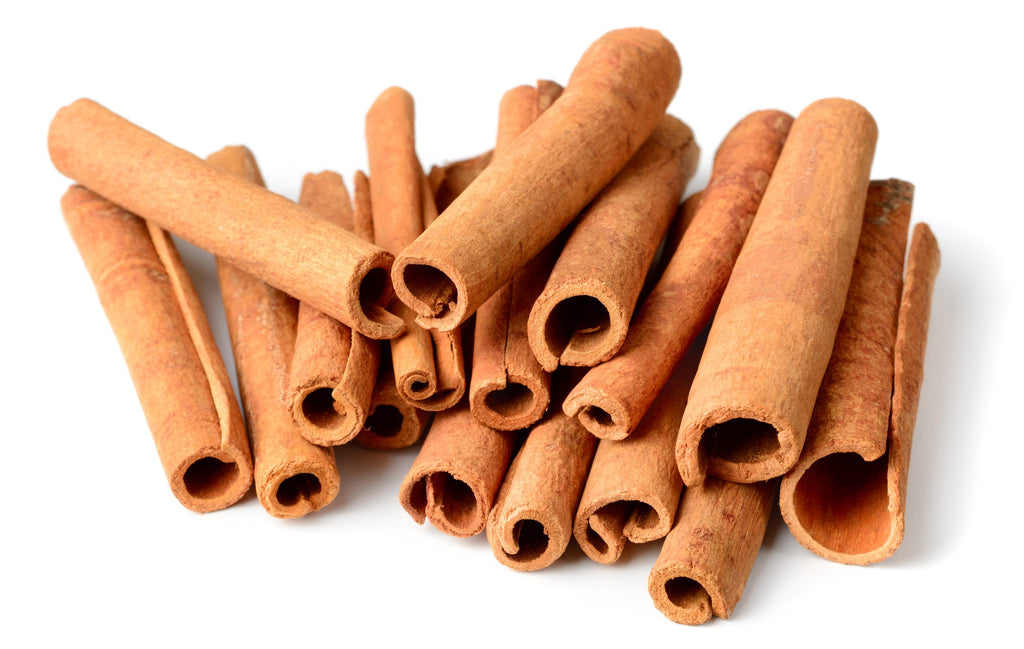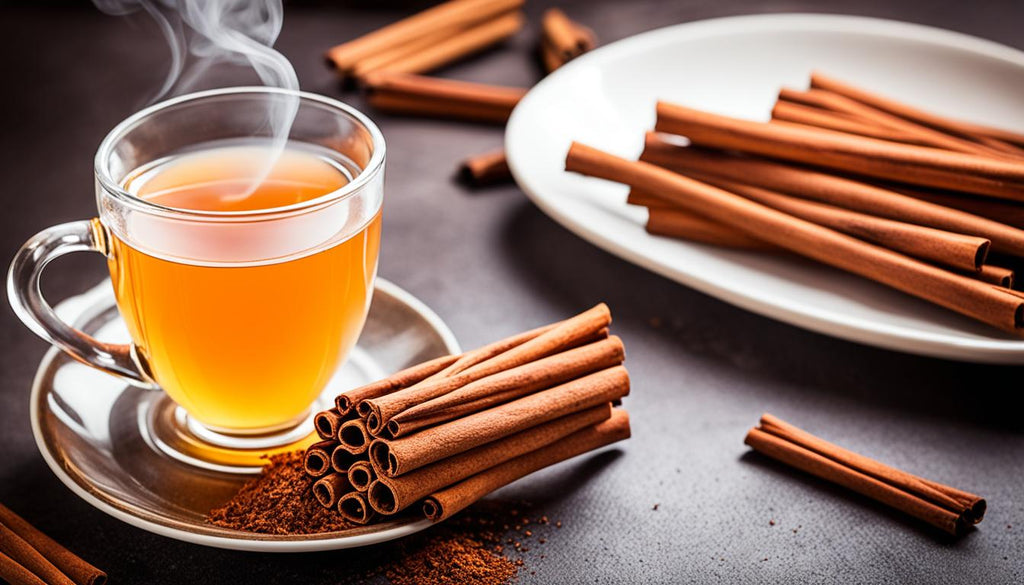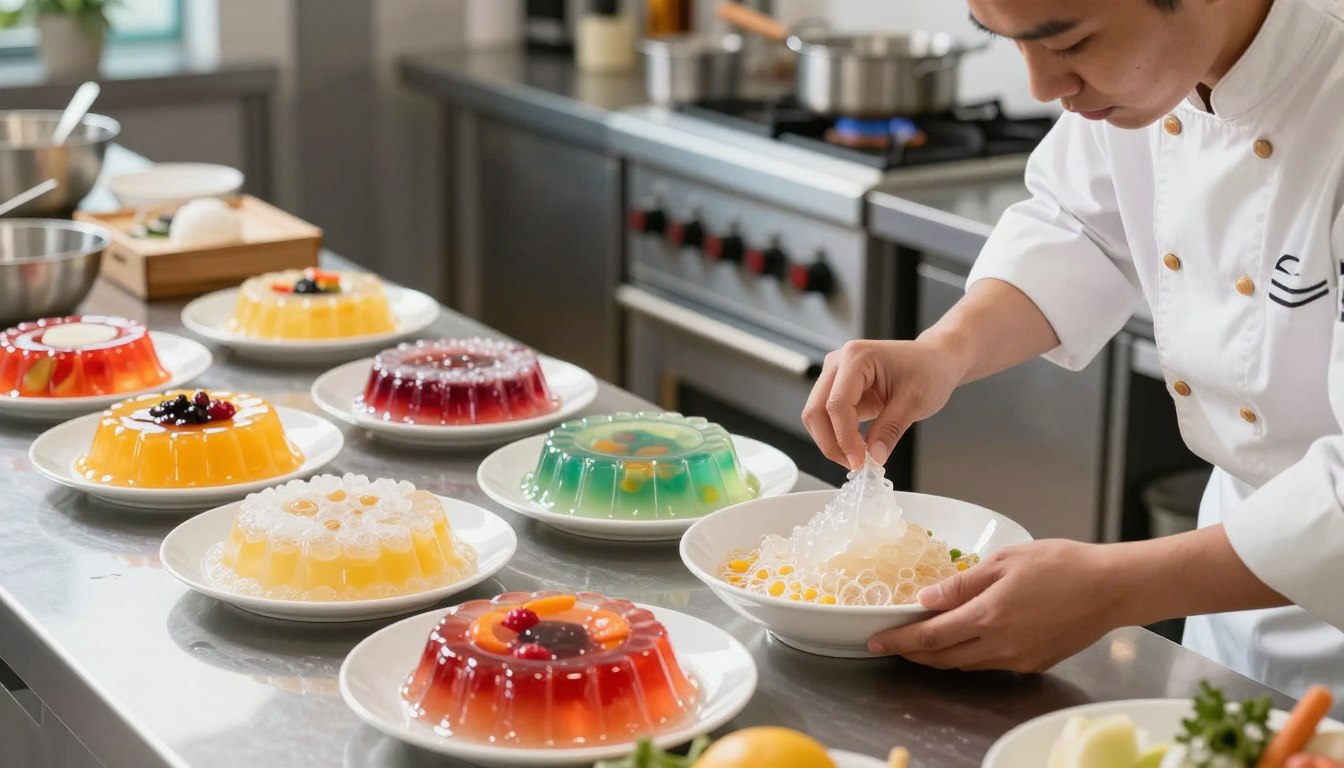
Is Your Cinnamon Real? Why You Might Be Eating Cassia Instead
SUBSCRIBE TO OUR BLOG
Promotions, new products, and recipes.
What if the cinnamon in your spice rack isn’t real cinnamon at all? Most store-bought "cinnamon" is actually Cassia, a cheaper and more common variety that lacks the delicate flavor and health benefits of true Ceylon cinnamon. In this guide, we’ll explore the differences between these spices, how to identify real cinnamon, and why it’s worth choosing the right one!
Cinnamon is a beloved spice known for its sweet and woody flavor, but did you know that the cinnamon you have in your pantry might not be true cinnamon? In fact, what you might be using is a variety called cassia, which closely resembles cinnamon in taste and appearance. In this article, we'll explore the differences between cinnamon and cassia, the health benefits of cinnamon, the potential risks of cassia consumption, and more. So let's dive in and uncover the truth about these aromatic spices.
Key Takeaways:
- Cassia is often sold as cinnamon but is not true cinnamon.
- True cinnamon, also known as Ceylon cinnamon, is considered to be of higher quality.
- Cassia contains higher levels of coumarin, a compound that can be toxic in large doses.
- Cinnamon offers various health benefits, such as stabilizing blood sugar levels and providing anti-inflammatory properties.
- Consumers should be mindful of spice adulteration and learn how to identify high-quality cinnamon.
The Difference Between Ceylon Cinnamon and Cassia
Ceylon cinnamon, also known as true cinnamon, is considered to be the highest quality cinnamon available. It is native to Sri Lanka and has a sweeter and more delicate flavor compared to cassia. Ceylon cinnamon also contains much lower levels of coumarin, making it a safer choice for consumption.
Ever wondered how top chefs create those amazing dishes? Start your journey into modernist cooking with our quality products. Click here to learn more.
On the other hand, cassia is more commonly found in supermarkets and is often sold as cinnamon. It has a stronger and more intense flavor, and higher levels of coumarin. Due to its lower cost and more readily available supply, cassia has become the cinnamon of choice for many commercial products. However, it's important to read labels carefully to ensure that you're getting true cinnamon if that's what you're looking for.
The Health Benefits of Cinnamon
Cinnamon is not only a delicious and versatile spice in cooking but also offers a wide range of health benefits. It has been used for centuries for its medicinal properties and has been shown to positively impact various aspects of health. Let's explore some of the top health benefits of cinnamon:
1. Stabilizes Blood Sugar Levels
Cinnamon is particularly beneficial for individuals with diabetes or those looking to manage their blood sugar levels. Studies suggest that cinnamon can improve insulin sensitivity, leading to better glucose control. Including cinnamon in your diet may help regulate blood sugar levels and reduce the risk of developing diabetes-related complications.
2. Anti-Inflammatory and Antioxidant Properties
Cinnamon contains potent anti-inflammatory compounds and antioxidants, including cinnamaldehyde and polyphenols. These properties help reduce inflammation in the body and protect against oxidative stress. By fighting inflammation and neutralizing harmful free radicals, cinnamon may contribute to better overall health and a lower risk of chronic diseases.
3. Supports Liver Health
The liver plays a crucial role in detoxification and overall metabolic processes. Cinnamon has been found to enhance liver function by reducing inflammation and promoting healthy liver enzymes. Including cinnamon in your diet may support liver health and enhance its ability to remove toxins from the body.
4. Natural Digestive Aid
Cinnamon has been traditionally used to soothe digestive discomfort and improve digestion. It helps stimulate digestive enzymes and reduces intestinal spasms, making it an effective natural remedy for digestive issues such as bloating and stomach cramps. Adding cinnamon to your meals or drinking cinnamon-infused herbal teas can aid digestion and promote a healthy gut.
5. Versatile Ingredient in Cooking
Cinnamon's health benefits extend beyond its medicinal properties. It is a versatile spice that adds a unique and delicious flavor to a variety of dishes. From sweet treats like baked goods, desserts, and hot beverages to savory dishes like curries and stews, cinnamon can enhance the flavor profile of your culinary creations.
To fully appreciate the health benefits of cinnamon, incorporating it into your regular diet is key. Whether you sprinkle it on your morning oatmeal or use it as a seasoning in your favorite recipes, cinnamon can be a valuable addition to a balanced and nutritious eating plan.
Now that we've explored the health benefits of cinnamon, let's take a closer look at the potential health risks associated with consuming cassia, the common variety often mistaken for true cinnamon.
| Health Benefit | Description |
|---|---|
| Stabilizes blood sugar levels | Cinnamon helps regulate insulin sensitivity, which aids in managing blood sugar levels and reducing the risk of complications related to diabetes. |
| Anti-inflammatory and antioxidant properties | Cinnamon contains compounds that fight inflammation and protect against oxidative stress, contributing to overall health and reduced risk of chronic diseases. |
| Supports liver health | Cinnamon has been shown to reduce liver inflammation and enhance liver function, aiding in detoxification and overall metabolic processes. |
| Natural digestive aid | Cinnamon can alleviate digestive discomfort by stimulating enzymes and reducing intestinal spasms, promoting better digestion and a healthy gut. |
| Versatile ingredient in cooking | Cinnamon adds a distinct and delicious flavor to a wide range of dishes, making it a valuable ingredient in both sweet and savory recipes. |

Above: Cassia. Cassia is a much thicker bark and is redder in color. But once ground to a powder, it is almost impossible to distinguish it from ceylon cinamon.
The Potential Health Risks of Cassia Consumption
While cassia is a commonly used spice that resembles cinnamon in taste and appearance, there are important health considerations that need to be taken into account. One of the main concerns is its high coumarin content, which can pose risks to our health, particularly to the liver.
Coumarin is a natural compound found in many plants, including cassia and cinnamon. It is known to have anticoagulant properties and has been used as a flavoring agent in foods and beverages. However, high levels of coumarin can be toxic to the liver, potentially causing liver damage and other adverse effects.
It's important to note that while cinnamon generally contains only trace amounts of coumarin, cassia can have significantly higher levels. This discrepancy in coumarin content raises concerns regarding the long-term consumption of cassia, especially in large quantities.
If consumed moderately, cassia is unlikely to cause harm to most healthy individuals. However, those with existing liver conditions or individuals taking medications that can affect liver function should exercise caution and limit their cassia consumption.
Regular monitoring of liver enzymes and consultation with a healthcare professional is recommended for individuals with pre-existing liver conditions.
In general, it's important to maintain a balanced diet and consume a variety of herbs and spices in moderation to minimize potential risks. Exploring alternative options, such as Ceylon cinnamon, can be a safer choice for those looking to enjoy the flavor and benefits of cinnamon with reduced coumarin content.
It's always wise to prioritize your health and make informed choices when it comes to the foods and ingredients you consume.
Now let's take a closer look at how to identify high-quality cinnamon and differentiate it from cassia.
The Distinction Between Cinnamon and Cassia
Before delving into the potential health risks associated with cassia consumption, let's first understand the differences between cinnamon and cassia.
Cinnamon and cassia are both derived from the bark of different species of evergreen trees. While cinnamon comes from the Cinnamomum verum tree, also known as Ceylon cinnamon or true cinnamon, cassia is obtained from the Cinnamomum cassia tree.
The two spices share similar flavors and appearance, making it challenging to differentiate between them based on taste alone. However, their chemical compositions, including coumarin levels, vary significantly.

| Cinnamon (Ceylon Cinnamon) | Cassia |
|---|---|
| Lower coumarin content | Higher coumarin content |
| Lighter in color | Darker in color |
| Delicate texture | Coarse texture |
| Sweeter and milder flavor | Stronger and more intense flavor |
These differences in appearance, texture, and flavor can help discern between the two spices.
Now that we understand the distinctions between cinnamon and cassia, let's dive deeper into the potential health risks associated with cassia consumption.
How to Identify High-Quality Cinnamon
With spice adulteration being a common practice, it can be challenging to find high-quality cinnamon. However, there are a few reliable methods to identify true cinnamon.
1. Check the Label
One way to ensure you're buying high-quality cinnamon is to look for labels that indicate "Ceylon cinnamon" or "true cinnamon." These labels certify that the product is authentic and of superior quality.
2. Examine the Appearance
Another way is to assess the appearance of the cinnamon. True cinnamon tends to be light in color and has a delicate texture. In contrast, cassia, a common substitute for cinnamon, is darker in color and has a more coarse texture.
3. Evaluate the Taste and Aroma
The taste and aroma of cinnamon can also provide clues to its quality. True cinnamon has a sweeter and more subtle flavor compared to cassia. Its aroma is delicate and enticing, adding depth to your culinary creations.
By considering these factors, you can ensure that you're purchasing and consuming high-quality cinnamon, enhancing your culinary experiences with its distinctive flavor and potential health benefits.
The Culinary Uses of Cinnamon
Cinnamon is a versatile spice that can elevate the flavors of a wide range of dishes, both sweet and savory. Its warm and aromatic profile makes it a popular choice in various culinary creations. Here are some delightful ways to incorporate cinnamon into your cooking:
Baking with Cinnamon
Cinnamon adds a delightful depth of flavor to baked goods, making them even more irresistible. Consider using cinnamon in the following recipes:
- Cakes: Add a touch of cinnamon to your cake batter for a fragrant and flavorful twist.
- Cookies: Sprinkle cinnamon on top of your favorite cookies before baking them for an extra burst of warmth.
- Breads: Whether it's banana bread, pumpkin bread, or cinnamon rolls, cinnamon can transform ordinary bread into something extraordinary.
Cinnamon in Hot Beverages and Breakfast Foods
Start your day off right with the aromatic flavors of cinnamon. Here are some ideas to try:
- Coffee and Tea: Sprinkle a pinch of cinnamon into your morning coffee or tea for a subtle, comforting flavor boost.
- Oatmeal: Stir in a teaspoon of cinnamon to your bowl of oatmeal for a cozy and delicious breakfast.
- Pancakes and Waffles: Incorporate cinnamon into your pancake or waffle batter to create a delectable breakfast treat.
Savory Dishes Enhanced with Cinnamon
Don't limit cinnamon to just sweet creations! It can also add depth and complexity to savory dishes. Try these recipes:
- Stews and Curries: Add a pinch of cinnamon to your stews and curries to infuse them with a warm and exotic flavor.
- Roasted Vegetables: Sprinkle cinnamon over roasted vegetables such as sweet potatoes or carrots for a unique twist on a classic side dish.
The Environmental Impact of Cinnamon Production
Cinnamon production has environmental implications that are important to consider. The cultivation of cinnamon trees requires specific growing conditions, such as a tropical climate and well-drained soil. However, the demand for cinnamon has led to deforestation in regions where it is grown. Land is cleared to make way for cinnamon plantations, resulting in the loss of valuable ecosystems and habitats.
Another aspect of the environmental impact of cinnamon production is the processing and packaging of the spice. Energy consumption and waste generation are inevitable in the manufacturing process. Energy-intensive machinery is used to dry, grind, and package cinnamon, contributing to carbon emissions and the depletion of natural resources. Additionally, the packaging materials used, such as plastic and paper, can create waste that contributes to pollution and landfill accumulation.
To mitigate the environmental impact of cinnamon production, it is important for consumers to make conscious choices. By opting for sustainably sourced cinnamon, individuals can support producers who prioritize environmentally friendly practices. This includes selecting cinnamon brands that prioritize reforestation efforts, employ sustainable farming methods, and utilize eco-friendly packaging materials.
By choosing sustainably sourced cinnamon, consumers can contribute to the preservation of ecosystems, reduce carbon emissions, and promote a more sustainable future. Making informed purchasing decisions and supporting companies that prioritize environmental responsibility are important steps toward minimizing the environmental impact of cinnamon production.
Nurturing Sustainable Cinnamon Production
Several initiatives and certifications are dedicated to promoting sustainable cinnamon production. These programs focus on implementing responsible farming practices, preserving biodiversity, and supporting local communities. One example is the Fairtrade certification, which ensures fair prices and improved working conditions for cinnamon farmers. It also encourages sustainable farming methods and community development.
Another initiative focused on sustainability is the Rainforest Alliance certification. This certification promotes environmental conservation, worker welfare, and the responsible use of natural resources. By choosing cinnamon products with these certifications, consumers can support ethical and sustainable cinnamon production.
Sustainable cinnamon production benefits not only the environment but also the communities and farmers involved in its cultivation. By fostering sustainable practices, the spice industry can work towards a better future for both people and the planet.
The Global Trade of Cinnamon and Cassia
Cinnamon and cassia are highly sought-after spices that are traded globally, with significant production and consumption in various countries. Let's take a closer look at the global trade dynamics of these aromatic spices.
Major Producers of Cinnamon and Cassia
Sri Lanka, located in South Asia, holds the title as the largest producer of true cinnamon. This region is known for its ideal growing conditions, which result in the production of high-quality cinnamon. Other countries in Southeast Asia, such as India and Indonesia, also contribute to the global production of true cinnamon.
On the other hand, cassia, a variety often sold as cinnamon, has its largest exporter in Vietnam. This country accounts for a significant portion of the world's cassia supply. China and Indonesia are also major producers of cassia.
Global Demand and Consumption
The global demand for cinnamon and cassia continues to grow, driven primarily by their widespread usage in the food and beverage industry. These spices are valued for their unique flavors and aromatic profiles, making them essential ingredients in a wide range of products, including baked goods, beverages, and savory dishes.
| Country | Cinnamon Production | Cassia Production |
|---|---|---|
| Sri Lanka | Leader in true cinnamon production | -- |
| India | Notable producer of true cinnamon | -- |
| Indonesia | Produces both true cinnamon and cassia | Major cassia producer |
| Vietnam | -- | Largest exporter of cassia |
| China | -- | Significant cassia producer |
*Note: "--" indicates that no data is available for cinnamon or cassia production in those specific countries.
Understanding the production and trade dynamics of cinnamon and cassia offers valuable insights into the market and supply chain of these spices. It allows businesses and consumers alike to make informed decisions regarding sourcing, quality, and sustainability.
Sources: World Spice Organization, International Trade Centre, Spice Council
Educating Consumers on Cinnamon and Cassia Differences
It is essential to educate consumers about the differences between cinnamon and cassia to make informed choices when using these spices. Many people are unaware that the cinnamon they commonly consume is often cassia, thinking it is true cinnamon. By understanding the distinctions, consumers can avoid potential health risks associated with excessive cassia consumption and reap the benefits of using true cinnamon.

Cassia contains higher levels of coumarin, a compound that can be toxic in large doses. True cinnamon, on the other hand, has significantly lower levels of coumarin, making it a safer option for consumption. By informing consumers about these health risks, we can raise awareness and encourage them to choose true cinnamon over cassia.
Moreover, sourcing authentic Ceylon cinnamon is crucial in obtaining high-quality cinnamon products. Consumers can ensure authenticity by reading labels and looking for the specific Ceylon cinnamon or true cinnamon indication. This guarantees that they are getting the real deal and not inadvertently purchasing cassia labeled as cinnamon.
Educating consumers empowers them to make informed decisions about the spices they use in their cooking and baking. By choosing authentic Ceylon cinnamon and understanding the differences between cinnamon and cassia, consumers can enhance the flavor of their dishes while prioritizing their health and well-being.
Conclusion
In conclusion, cinnamon and cassia are both popular spices with distinct characteristics and uses. True cinnamon, or Ceylon cinnamon, is considered to be of higher quality and has lower levels of coumarin compared to cassia. While both spices offer health benefits, it's important to be mindful of the potential risks associated with consuming excessive amounts of cassia.
Identifying high-quality cinnamon and incorporating it into cooking and baking can enhance the flavor of dishes and provide potential health benefits. By educating consumers on the differences between cinnamon and cassia, we can promote healthier choices and ensure the enjoyment and safety of these spices.
So next time you reach for that spice jar, remember the importance of choosing the right cinnamon. Whether you prefer the delicate sweetness of true cinnamon or the boldness of cassia, understanding the differences will allow you to make informed decisions in the kitchen and take advantage of the unique flavors and potential health benefits these spices have to offer.
FAQ
What is the difference between cinnamon and cassia?
Cinnamon and cassia are two different types of spices. While they have a similar taste and appearance, they come from different plants and contain different levels of coumarin, a compound that can be toxic in high doses.
What is true cinnamon?
True cinnamon, also known as Ceylon cinnamon, is considered to be the highest quality cinnamon available. It has a sweeter flavor and contains lower levels of coumarin compared to cassia.
Are there health benefits associated with cinnamon?
Yes, cinnamon has been shown to have numerous health benefits. It can help stabilize blood sugar levels, has anti-inflammatory and antioxidant properties, and can improve liver function. It is also used as a natural remedy for digestive issues.
Can cassia be toxic?
Cassia can contain higher levels of coumarin compared to cinnamon. Consuming large quantities of cassia can potentially have adverse effects on liver health, especially in individuals with existing liver conditions or those taking medications that affect liver function.
How can I tell if I'm buying high-quality cinnamon?
Look for labels that specify "Ceylon cinnamon" or "true cinnamon." Additionally, true cinnamon is lighter in color and has a more delicate texture compared to cassia. The taste and aroma of true cinnamon are also sweeter and more subtle.
How can I use cinnamon in cooking?
Cinnamon can be used in both sweet and savory dishes. It is commonly used in baking, such as in cakes, cookies, and breads. It can also be added to hot beverages, breakfast foods like oatmeal, and savory dishes like stews and curries.
What is the environmental impact of cinnamon production?
The cultivation and processing of cinnamon can have environmental implications, including deforestation and energy consumption. Choosing sustainably sourced cinnamon can help reduce these impacts.
Where is cinnamon and cassia produced and traded?
Sri Lanka is the largest producer of true cinnamon, while Vietnam is the largest exporter of cassia. These spices are globally traded, with significant production and consumption in various countries.
How can consumers be educated about the differences between cinnamon and cassia?
Providing information on the health risks of excessive cassia consumption and the benefits of using true cinnamon can help educate consumers. Additionally, educating them on how to source authentic Ceylon cinnamon and read labels can empower them to make informed choices.
What are the main points to take away from the differences between cinnamon and cassia?
Cinnamon and cassia have distinct characteristics and uses. True cinnamon, or Ceylon cinnamon, is considered to be of higher quality and has lower levels of coumarin compared to cassia. While both spices offer health benefits, it's important to be mindful of the potential risks associated with consuming excessive amounts of cassia.
Source Links
- https://pharmeasy.in/blog/10-incredible-health-benefits-of-cinnamon/
- https://www.stylecraze.com/articles/is-cinnamon-and-honey-effective-for-weight-loss/
- https://www.stylecraze.com/articles/cinnamon-for-hair-growth/
Well That's the Story. I hope it was helpful. Let's Hear Your Thoughts!
We've shared our insights, and now it's your turn! Have an opinion, a question, or a story to share about this article? Dive into the comments below and join the conversation. Your voice is a crucial part of this community, and we're eager to hear what you have to say.
Thought that was fascinating? Here’s another story you might like:
See: The Hydrocolloid Glossary
For further reading:
The Many Benefits and Nutritional Value of Yogurt
Every dish deserves the perfect texture to complement its flavors. Why settle for anything less than perfection? With Cape Crystal Brands Food Texture products, you don't have to. Whether you're crafting velvety sauces, glistening gels, or fluffy mousses, our range ensures you get the consistency you desire every single time.
Don't just cook—create masterpieces. Dive into the world of culinary textures and elevate every meal. Shop now and experience the magic of Cape Crystal!
🛍️ Click Here to Explore Cape Crystal Brands Food Texture Products!

Chef Edmund
Edmund McCormick is the founder of Cape Crystal Brands and EnvironMolds LLC. He is the author of several non-fiction “How-to” books, past publisher of the ArtMolds Journal Magazine, editor of Beginner's Guide to Hydrocolloids, and author of six eBook recipe books available for download on this site. He resides in Far Hill, NJ and lives and breathes his food blogs as both writer and editor. You can follow him on Twitter and Linkedin.

|
About the Author Ed is the founder of Cape Crystal Brands, editor of the Beginner’s Guide to Hydrocolloids, and a passionate advocate for making food science accessible to all. Discover premium ingredients, expert resources, and free formulation tools at capecrystalbrands.com/tools. — Ed |
Enjoyed this post? Subscribe to The Crystal Scoop
Food-science tips, ingredient know-how, and recipes. No spam—unsubscribe anytime.
- Choosing a selection results in a full page refresh.





